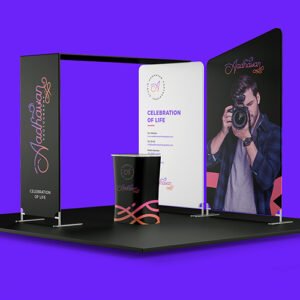Learning graphic design can benefit professionals across various fields, regardless of their primary job functions. Here are some ways in which learning graphic design can be beneficial:
Visual Communication:
Graphic design enhances your ability to communicate ideas visually. Whether you’re creating presentations, reports, or marketing materials, having a grasp of design principles allows you to effectively convey information in a visually appealing and engaging manner. This skill can help you better connect with your audience and leave a lasting impression.
Branding and Marketing:
Understanding graphic design enables you to develop and maintain a strong brand identity. You can create visually consistent branding materials, design eye-catching advertisements, and develop marketing collateral that stands out. This skill is valuable for professionals involved in marketing, sales, and business development.
User Experience (UX) Design:
Knowledge of graphic design principles can contribute to improving user experiences in various digital and physical products. Whether you’re designing a website, an app, or a physical product, incorporating user-friendly and visually appealing design elements can enhance usability and customer satisfaction.
Presentations and Reports:
In professions where presenting information is common, graphic design skills can make your presentations more engaging and memorable. You can effectively use visual aids, infographics, and data visualization techniques to simplify complex information and communicate it in a compelling way.
Web Design and Content Creation:
Learning graphic design can empower professionals involved in web design and content creation. Understanding design principles allows you to create visually appealing websites, design engaging social media graphics, and craft compelling visual content for blogs and articles.
Collaboration and Communication:
Graphic design knowledge enhances collaboration and communication with design teams or agencies. When working with designers, having a basic understanding of design principles helps you effectively communicate your vision, provide constructive feedback, and collaborate more efficiently.
Attention to Detail:
Graphic design fosters an attention to detail and a focus on aesthetics. This skill can be valuable in professions where visual presentation and attention to detail are critical, such as architecture, fashion, photography, and interior design.
Problem Solving and Creativity:
Graphic design promotes problem-solving skills and encourages creative thinking. Learning design principles helps you approach challenges from a different perspective, find innovative solutions, and think critically about visual communication.
Personal Branding and Professional Development:
Graphic design skills can benefit professionals in developing their personal brand and online presence. From designing a personal logo to creating a visually appealing resume or portfolio, you can showcase your skills and stand out in a competitive job market.
Learning graphic design provides valuable skills that can be applied across various professions. It enhances visual communication, branding, marketing, user experience, and overall creative thinking. By acquiring graphic design knowledge, professionals can effectively convey information, create visually appealing materials, and make a lasting impact in their respective fields.








